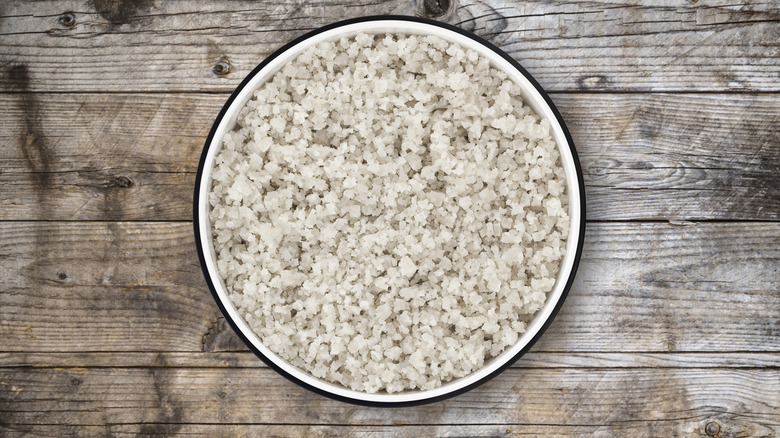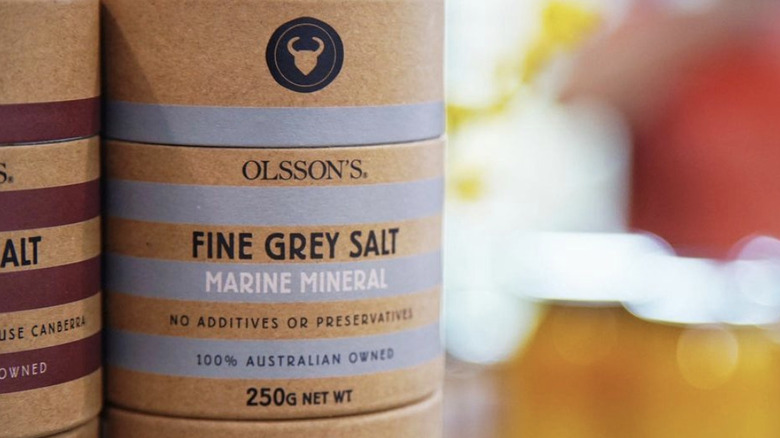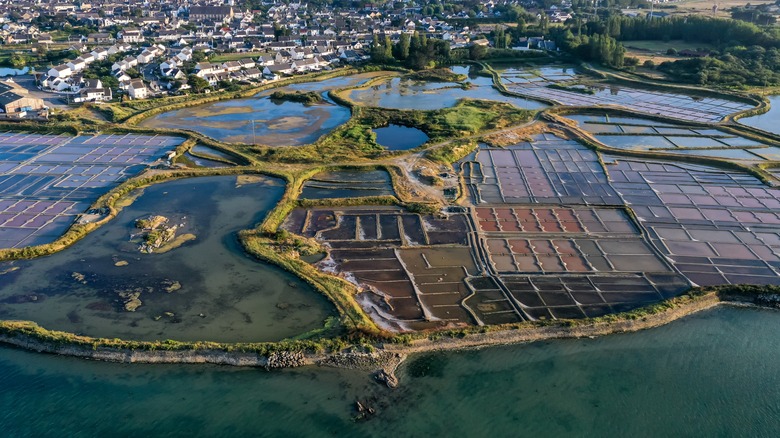Sel Gris, The Sea Foam Salt You Need To Softly Elevate Dishes
Salt is one of the most universally used cooking components, and it supports entire communities across the globe devoted to salt mining. Aside from large commercial salt conglomerates producing multiple-million tons per year, there's a small army of sea-swarthy pioneers creating artisan salt products in smaller batches.
From kosher salt to flakes, Himalayan pinks, mesquite smoked, fleur de sel, black lava, and dozens more, the world of salted cuisine has never been more varied and accessible. Then there's a finishing salt from France that makes its own distinct, pillowy mark on dishes across the globe. It's known as sel gris, which translates as "gray salt," typically referred to in English terms as Celtic gray sea salt. It's hand-harvested primarily in one location on the northern coast of France, and unlike standard salt, it comes from the sea foam during evaporation.
This fluffy mineralized salt product softly elevates dishes in an almost indiscernible way, but its subtle yet significant impact on food is celebrated by many professional chefs and home cooks.
How sel gris gets its unique characteristics
Hailing from clay-lined tidal salt ponds resting off the French coastline in the Guérande region, sel gris gets its namesake gray tones from the minerals it harbors. After the seawater evaporates, it leaves inherent marine minerals behind, along with trace amounts of numerous oceanic elements such as manganese, calcium, phosphorus, and iodine. This affects not only the gray coloring but infuses a light, salty, ocean flavor, distinct from other types of salt.
Since the salt does not get refined after harvesting, it retains much of the minerals and flavors. To ensure the preservation of the living enzymes, the harvesters use traditional wooden rakes and instruments rather than potentially harmful metals. It follows Celtic salt-farming techniques cultivated centuries ago.
In keeping with age-old tradition, sel gris foregoes additives such as preservatives, dyes, and chemicals. Though sometimes available in larger crystals, sel gris more often appears in a fine-grain powdery form, often achieved by hand-grinding with a stone or similar implement.
How to use sel gris salt
Sel gris most often falls within the category of finishing salt, similar to Maldon salt from England's southern coast, fleur de sel from France, and Himalayan pink sea salt, which is typically harvested in Pakistan. They're called finishing salts due to their delicate consistency, making them ideal for light dusting over a finished recipe. They also work well for touching up roasted pecans or making salted caramel candies and other sweet-and-salty treats.
As a seasoning, sel gris instantly enhances the flavor of steamed or roasted vegetables, leafy greens, soups, or pasta, and even puts a grand-finale touch on seafood or grilled meats. It's best to use it after cooking so that the elegant texture and taste remain forthright and tangible on the taste buds.
If you opt for buying the less-common coarse, crystal version of sel gris, it could work as a table salt, standard seasoning, or in fermented foods such as kimchi and pickles. The higher moisture content in the crystals may require a sturdy grinder to achieve the desired consistency.



